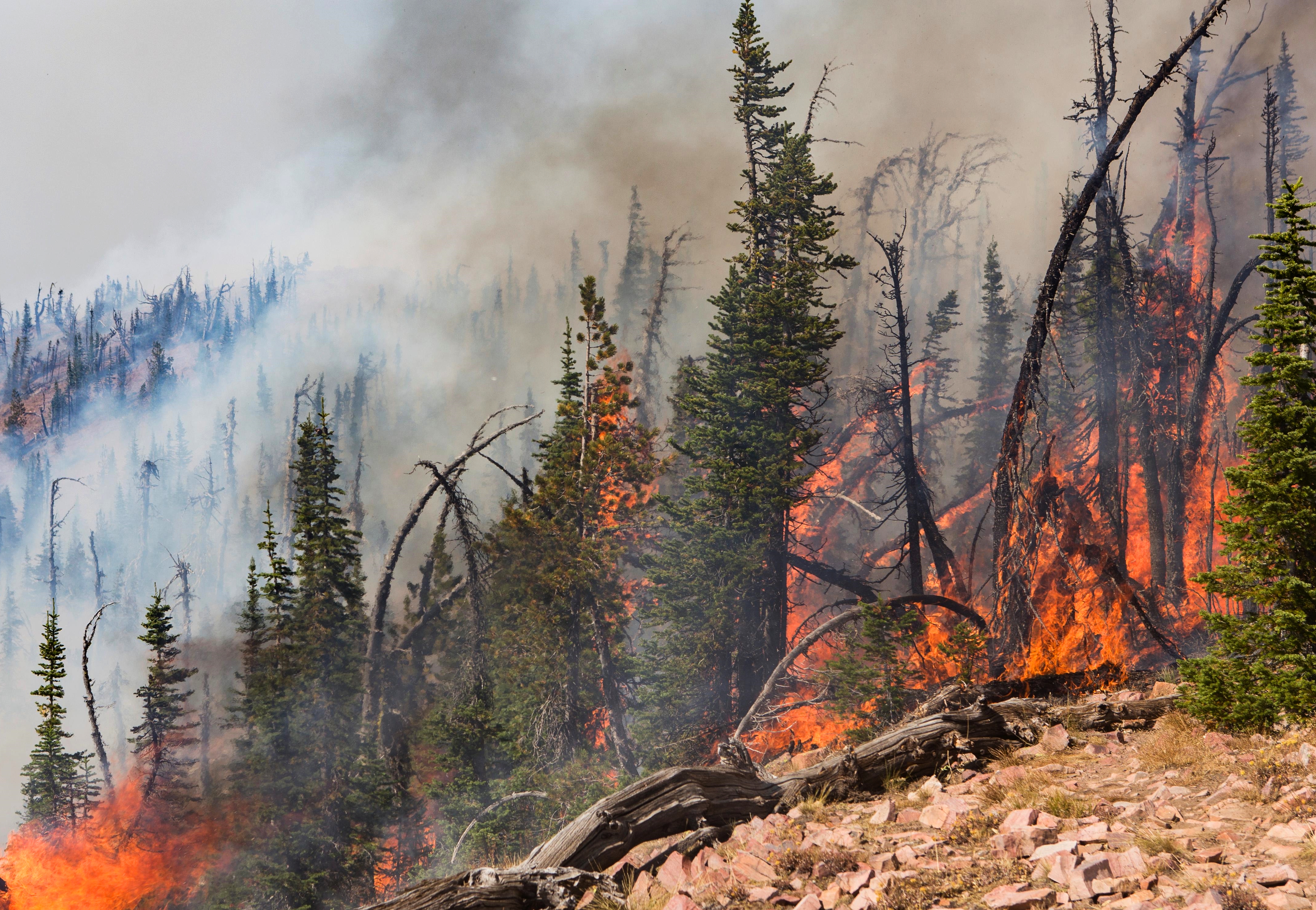Unfortunately, federal land management agencies have failed to recognize this correlation and timber harvests are down 80 percent over the last 30 years. Such flawed thinking also negatively impacts education and local communities…
by Marjorie Haun
On the afternoon of October 4, President Trump’s Budget Director, Mick Mulvaney, announced the Administration would work with Congress to fund $577 million in supplemental wildfire disaster relief. The announcement came shortly after 32 members of the Congressional Western Caucus submitted a letter to the Office of Management and Budget (OMB), calling for a swift response to the nation’s wildfire crisis. With the approval for funding also came a request from the Trump Administration for quick Forest Service management and budgeting reforms to correct the failed policies which have resulted, in part, in this year’s devastating wildfires.
In the press release issued by the Western Congressional Caucus following the OMB’s announcement, the case for expediting management reforms was laid out:
As of this morning, the National Interagency Fire Center reports that there have been 50,018 fires that burned 8,426,984 acres so far in 2017. The Forest Service has already spent more than $2.3 billion on suppression costs this fiscal year alone – a new record.
According to the Forest Service another 60-80 million acres throughout the country are currently considered high risk. The House Committee on Natural Resources reports that in 2016, wildfires destroyed 4,312 structures, including 3,192 residences.
Mismanagement has left our forests vulnerable to insects and disease and ripe for catastrophic wildfires. The system is broken. We need forest management reforms, and we need them now.
The Forest Service only harvested 2.5 billion board feet in 2016 compared to over 10 billion board feet in 1990. Hazardous fuels are estimated to be accumulating three times as fast as they can be treated. This is a treatable problem, and one which we understand the causes of very well. The Forest Service’s own Fuel Treatment Effective Database reports that “over 90 percent of the fuel treatments were effective in changing fire behavior and/or helping with control of the wildfire.”
Unfortunately, federal land management agencies have failed to recognize this correlation and timber harvests are down 80 percent over the last 30 years. Such flawed thinking also negatively impacts education and local communities as historically 25 percent of the receipts from all timber harvested by the federal government go toward schools and important infrastructure projects.
Eight times in the last twelve years, the Forest Service has moved funds from other operating accounts to fight fire, depleting accounts for forest management in the process that would help prevent catastrophic wildfires. This flawed approach causes us to spend billions of dollars on the backend to suppress fire, neglecting fire prevention and putting our communities at increasing risk of catastrophic fire.
In the letter from Congress to Mulvaney’s office, comparisons were made to the billions in disaster relief funds for events such as Hurricane Katrina ($150 billion) and Hurricane Sandy ($50 billion ), to that of the annual budget of the Forest Service ($7.1 billion). But instead of simply calling for increased funding for wildland firefighting in the Forest Service budget, the letter points out that new approaches are needed to prevent wildfires. Using the bipartisan Resilient Federal Forests Act, and the Wildfire Disaster Funding Act as examples of such reforms, the letter states:
Healthy forest advocates support solutions like Rep. Westerman’s bipartisan H.R. 2936, Resilient Federal Forests Act and Reps. Simpson and Schrader’s bipartisan H.R. 2862, the Wildfire Disaster Funding Act. H.R. 2936 is comprehensive legislation that simplifies the cumbersome planning process and reduces the cost of implementing proactive forest management strategies. The bill adopts a forward-thinking, active management strategy that combats dangerous wildfires before they get started and includes reforms that would end the practice of fire borrowing. H.R. 2862 would change how we budget for the costs of suppressing catastrophic wildfires to conform to the method we use to budget for other natural disasters , such as hurricanes and tornadoes.
Just hours after receiving the letter, the OMB issued its response asking Speaker Paul Ryan to speed emergency wildfire funding through Congress the way it had disaster relief for those regions hit earlier this year by Hurricanes Harvey and Irma. Mulvaney also addressed Forest Service ‘wildfire borrowing,’ calling for long-term reforms to defective processes that no amount of additional funding can fix.
…severe wildfires have been raging on the west coast, as fire danger indices have hit record levels across large portions of the Pacific Northwest, Northern Rockies, and Northern California. This caused the Department of Agriculture’s (USDA) U.S. Forest Service to exhaust its entire 2017 wildland suppression budget authority in September…
Accordingly, the Administration is requesting $576.5 million to support these heroic firefighting efforts. Because the need for this funding arises from unforeseen, unanticipated events, additional resources for the U.S. Forest Service should be provided as emergency funding.
The Administration believes that the problem of wildfire “borrowing” must be addressed in a more structured, long-term manner. However, additional funding alone will not reverse the worsening trend of catastrophic wildfires that threaten our forests, critical habitats, and communities that border public lands. Active forest management and other reforms must be part of the solution to curb the cost and destruction of wildfires.
The Forest Service budget seems small in comparison to emergency funding that has gone to some of the nation’s worst weather disasters, such as Hurricanes Katrina and Sandy, but at over $7 billion per year, the agency is, in reality, well-funded yet continues to be fraught with wasteful practices. In recent years, public opinion about the Forest Service has soured, and in the West it has gained a reputation for locking up lands and resources, instead of managing them to the benefit of the people they’re supposed to serve. The correlation between less logging, clearing and grazing, and more wildfires has been established, but needed reforms have been inevitably impeded through lawsuits brought by extreme green groups, and by the Forest Service’s own resistance to managing forests as a resource, not as museums. Nevertheless, this action by the Trump Administration magnifies the conversation about the why’s and how’s of wildfires, and those of us in the West can hope Congress as a whole will take a long look at why and how federal agencies are failing our public lands.
[paypal_donation_button]
[wp_ad_camp_3]
[wp_ad_camp_2]



